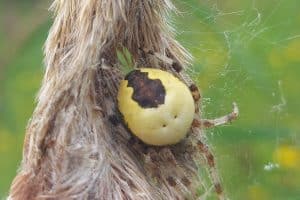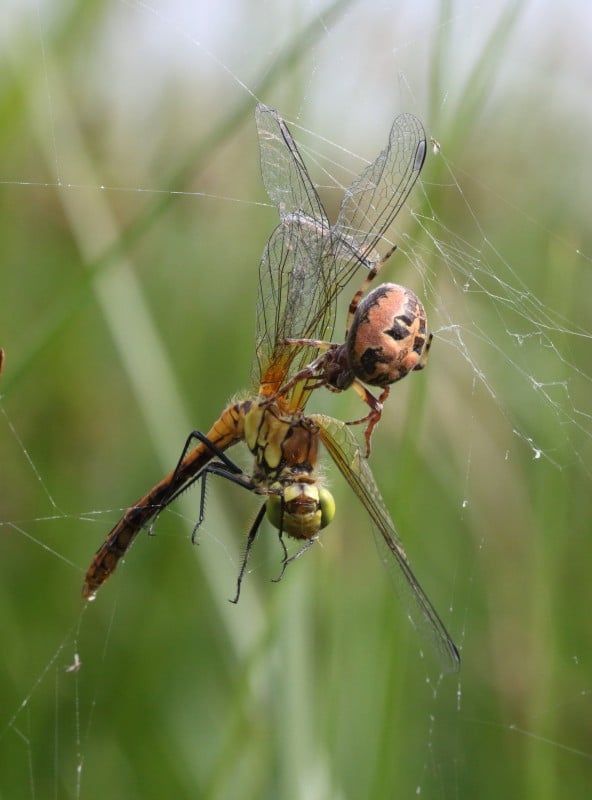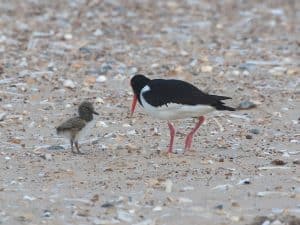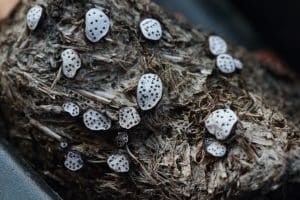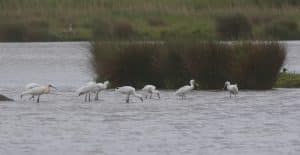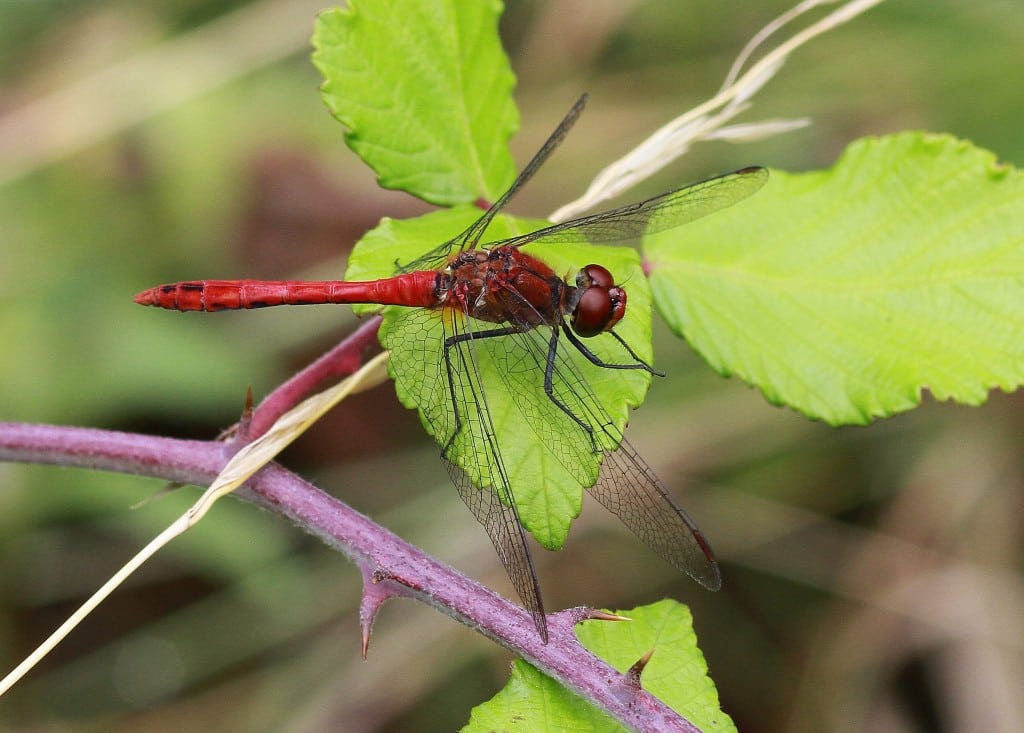
An Emergence of Dragons
July 11, 2018 | Nature news | 8 minute read

The male Ruddy Darter, a common dragonfly of the reserve in July and August
Working on the marshes we encounter many sights and sounds, some that many people never even come close to witnessing. One of the real marvels of nature for me is seeing the abundance and variety of dragon and damsel flies that methodically hunt for smaller insect prey up and down our dykes and around our fresh water pools. Yet that phenomenon is not unique. Pick any pond, stream or lakeside in the summer in the countryside and even some urban parks and gardens and you are sure to find a few species but what is a bit more difficult to see is their actual emergence, their transformation from an underwater aquatic ‘nymph’ to the splendid fast flying blur of dazzling colours that the adult insect actually matures into. It is one of those lifecycles that we all can read about and see pictures of but to actually see that moment is another thing. A big helping of luck and patience is required. Despite being an avid naturalist for a good many years it is not something I had ever seen, yet all good things come to thee who wait.
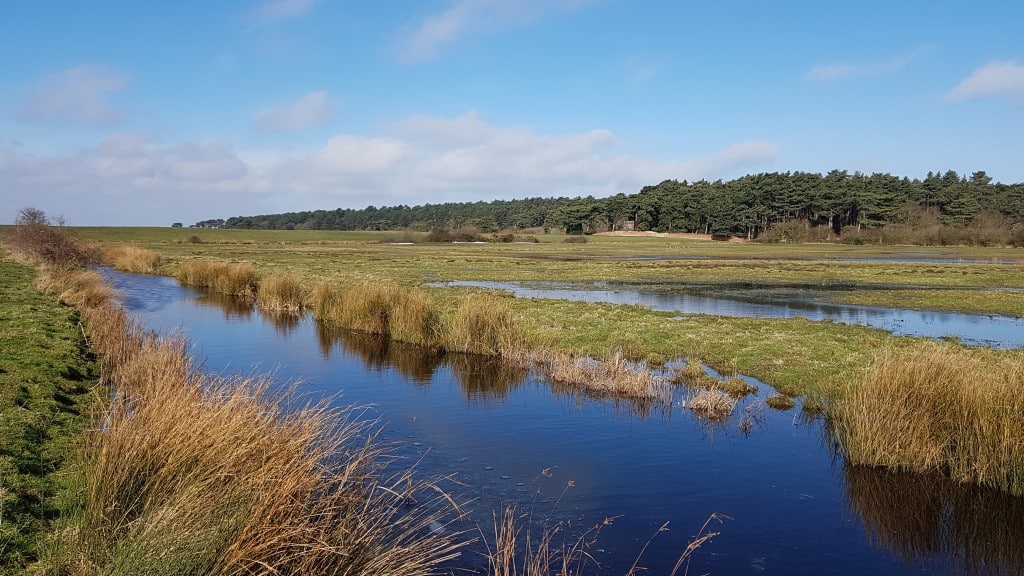
The grazing marsh dykes at Holkham are great for all manner of life, both big and small!
In recent weeks we had to search an area surrounding one of our marshy pools to look for a very special hoverfly; the Sea Club-rush hoverfly. We noted one last year, but being an extremely rare insect found only on Sea Club-rush (a very coarse sedge that grows prolifically around some of our pools) we decided to see if we actually had a resident population. As it is known in the UK only from a few sites in East Norfolk, the Thames Estuary and the south and south west coasts of England and is Near Threatened and Red Listed (which means it is pretty rare and in need of protection) it would be a feather in our cap if we had a breeding population. Unfortunately our quest has so far drawn a blank but it did yield many other interesting creatures. Some big some very small! The first thing we saw was a distinctive brown head and neck poking skywards from the sea of flowing vegetation; a Bittern! Bitterns are usually skulking and a rare sight at the best of times, preferring to hide in a dense covering of reeds. But here was one right out in the open. When it saw us it shot off croaking, glancing back almost in indignation . . . It was actually seen more than once and a bit of detective work revealed that the area in which it was frequenting was full of young Natterjack toadlets. Yet another one of our conservation dilemmas; one rare inhabitant feeding on another equally rare inhabitant.
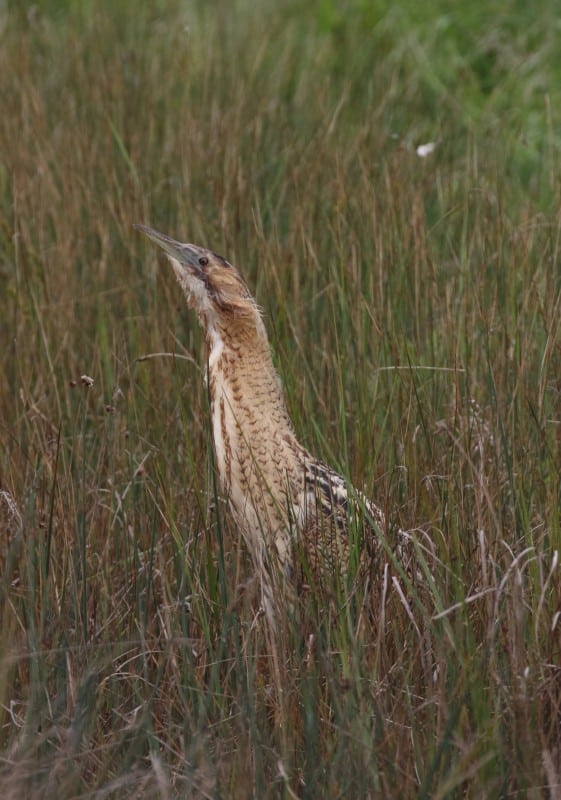
The Bittern, a generally secretive species that shuns being out in the open
Once we entered the mass of gently swaying thick swathe of sedges and rushes, so the insects started to emerge. Vicious biting horse flies were the first to investigate our presence swiftly followed by countless tiny moths. These ‘micro’ moths are a notoriously difficult to identify group of insects (most are hard enough to even see) but there are some quite stunning coloured ones to be found in the English countryside. This however was not one of them, it was rather drab and non-descript to the untrained eye but with a bit of knowledge its sparse dark markings and lineated appearance combined with its seemingly obvious love of Sea Club-rush perhaps made it a species worth investigating fuller. Photographs were taken and a specimen caught. Later examination from an expert revealed it to be what we had suspected, the exotic sounding Saltern Marble. It was first seen in Norfolk in 2009 and has since been seen at a further nine sites, but never Holkham. It is categorized as Nationally Scarce B, which again makes it rather a special insect to find.
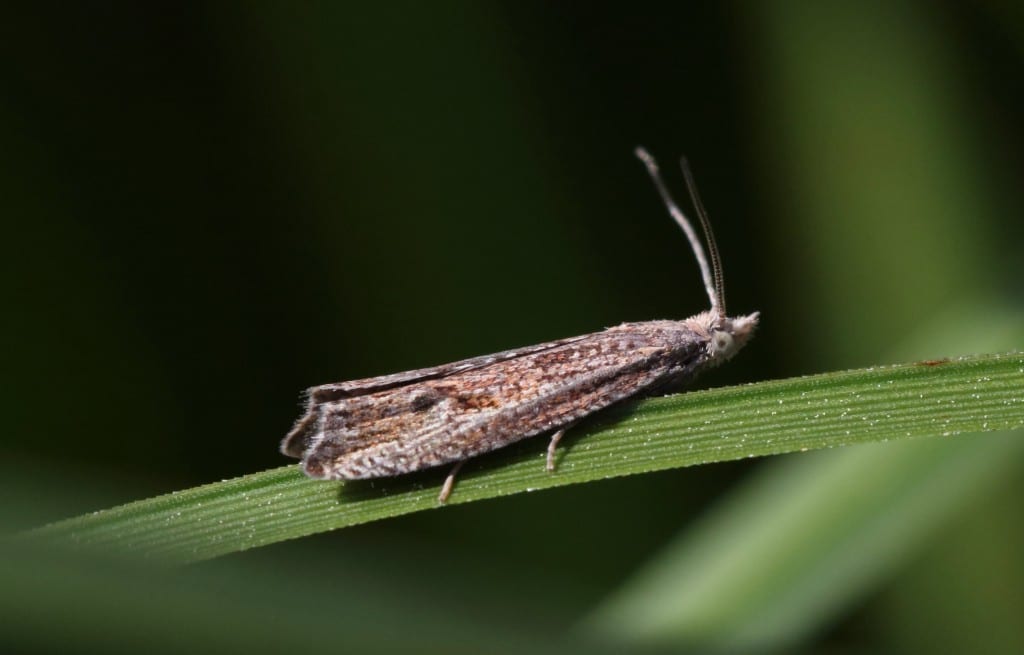
The Saltern Marble, a rare micro moth new to Holkham
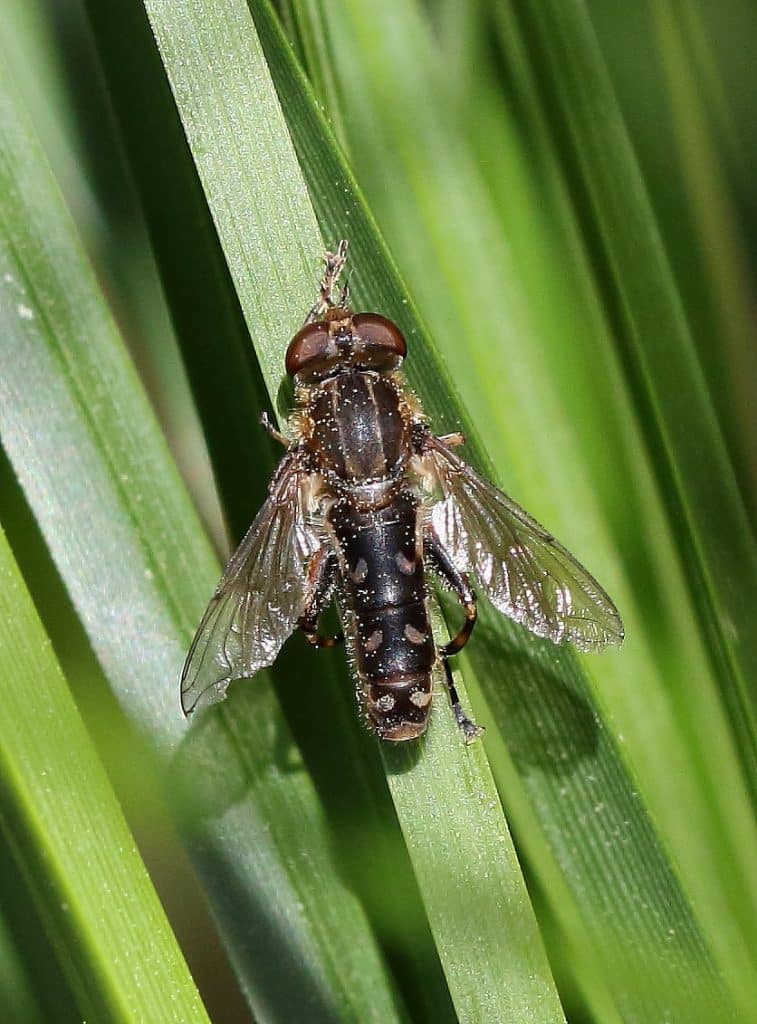
The Golfclub Hoverfly, another new insect for the reserve
Continuing our search we managed to find several species of hoverfly but not the one we were hoping for. We did find a similar species Anasimyia transfuga, sometimes called the Golfclub Duckfly due to the chevron markings on its abdomen and its love of watery environs. This fly is known from a few Norfolk sites but is more numerous nationally than the Sea Club-rush Hoverfly. One other insect we found in huge numbers was the Ruddy Darter dragonfly. This is a common species of our wetlands and on this particular day they were everywhere. Shining golden yellow (as opposed to the red of the mature males) these were all newly emerged ‘tenerals’, the first stage of the adult insect’s life. They were sitting clinging precariously to reeds and grasses, soaking up the rays of the sun. This is an integral stage of their life.
Prior to this the early stages of a dragonfly’s life is spent underwater. From eggs laid, the larval ‘nymph’ hatches that then stays for a year (or sometimes two in the larger species) underwater predating any other invertebrates (or sometimes toad tadpoles) that comes its way. When the time arrives to metamorphose the nymphs crawl out of the water and ascend reeds and grasses and from here the exoskeleton splits open and the adult dragonfly bursts free and into the world above water. When they first emerge they need to truly form and this means their wings unfurling, hardening off in the sun before flight is possible. This is the real moment when the ‘dragons’ ascend and this was the behaviour I had yet to witness.
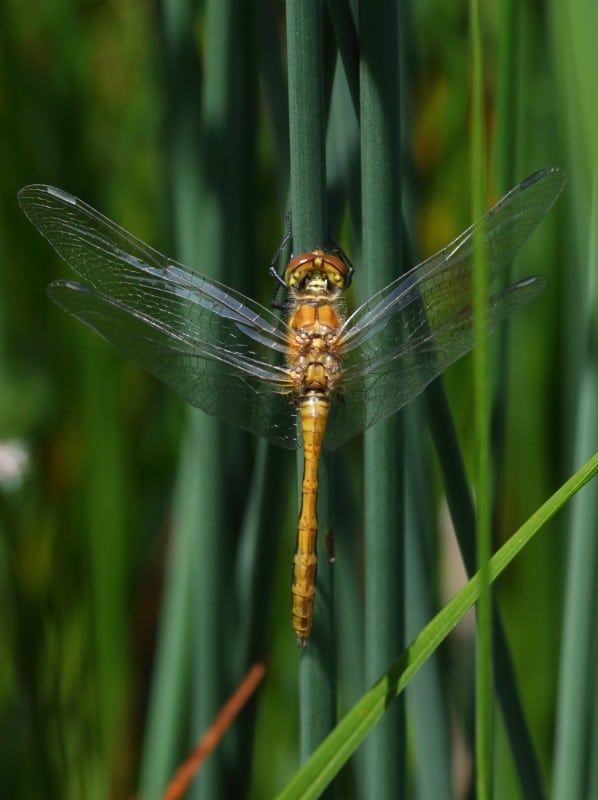
A fresh Ruddy Darter, one of hundreds seen.
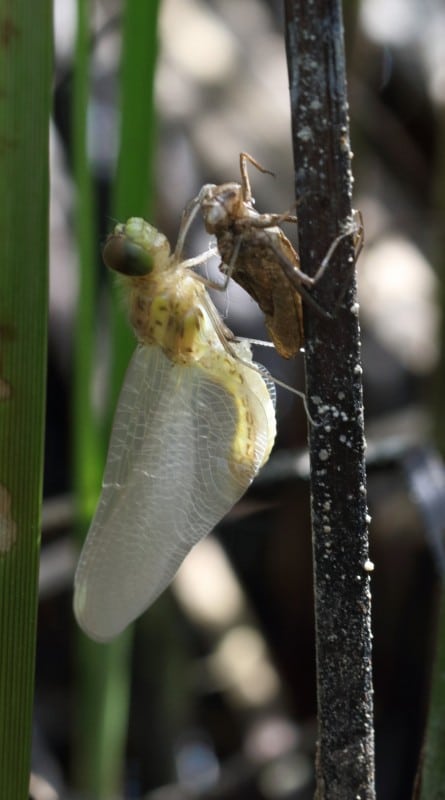
A newly emerged Ruddy Darter that has just split out from the exo skeleton of its larval stage
On this particular day, there must have been a mass emergence due to the numbers in the vegetation. As usual I was a fraction too late to witness the actual nymphs crawling out of the water, but I did find one dragonfly that had just emerged. It sat tight with wings still unformed on top of the split exo-skeleton from its past life. It was good and close enough for me, a real nature in action moment, commonplace but seldom seen. By now as I write the tenerals will have changed colour from golden yellow to vibrant blood red (in the males) and they are unmissable. With high summer upon us, now is the time of the dragons of several spectacular species. Sit tight beside a stretch of water and you will soon see this amazing event. That is if the dragonflies don’t fly into a spider’s web as the example below did. All that while underwater and then to be caught and eaten as soon as the wide world is entered. Not the best of luck!
View all latest blog posts here.
Related journals
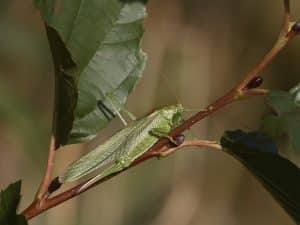
Conservation conversations: October 2025 on the Holkham National Nature Reserve
Nature news
Read more